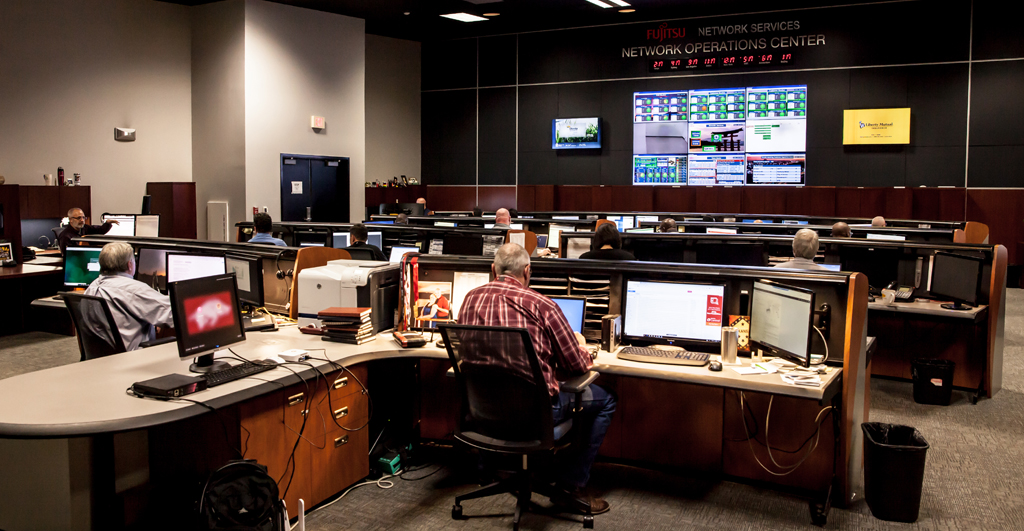
Technology is fast-moving and ever-evolving. Whether you are a current broadband provider or thinking of becoming one, you need to consider how to efficiently and effectively manage technology. If you have a smaller network—such as a rural electric cooperative, telecom cooperative, or public power utility—transitioning to a new service platform is challenging enough. Managing delivery of those new services to ensure value for your customers while maintaining profitability…that’s a whole other issue. It requires the personnel, facilities and systems to maintain five-nines availability, as well as the resources to implement a solid disaster recovery plan, should the need arise.
When it comes to managing your broadband network, you’ve got a couple of choices. You can add more resources to your existing network operations center (NOC), or you can outsource the expertise and resources you need. In this two-part blog, we’ll take a look at the pros and cons of each, starting with identifying and integrating broadband service support into your in-house NOC.
The resources you’ll need can be divided into three categories: facility, systems and staff.
Facility Planning
These days, most networks—including smaller rural ones—either maintain their own NOC facility or lease from a NOC facility provider. In either case, you can’t assume your facility has the broadband management resources and personnel required. More specifically, it should be large enough to add redundant power and cooling systems, network infrastructure, backup phone systems and the staff needed to provide 24/7 monitoring.
One important thing when it comes to the NOC facility is the increasing need for redundancy, not just in systems but in facilities. Depending on your KPIs, two complete facilities may be required. From a cost perspective, expect to spend over $1M plus annual maintenance and other operating costs for two facilities with redundant systems capable of providing 24/7/365 coverage and disaster recovery.
System Requirements
Inside the NOC, there are two general types of systems needed to support your broadband network. First are the monitoring and support systems that are primary to the success of any network. These include an ultra-reliable network connection that allows you to monitor and respond to issues quickly, as well as diagnostic systems and dashboards for troubleshooting throughput, device configuration, and network topology issues. You’ll also need performance monitoring and alert systems more specific to broadband services. These provide centralized and actionable insights for troubleshooting throughput, availability, capacity loading, hardware thresholds, service interruptions, and other key metrics.
The second type of system includes anything pertaining to the operation and support of the NOC itself. This may include power monitoring, automated infrastructure management (AIM) systems, or—for larger facilities—data center infrastructure management (DCIM) solutions that provide a holistic view of both the IT and facility stacks. For any system, you’ll need to factor in the annual cost of maintenance, technology upgrades, and expansion.
Staffing Needs
A typical NOC will require a minimum of eight IT techs for 24-hour support. It’s important that your staff is well trained on IP, Ethernet and fiber networks in order to monitor your new broadband network and respond to issues. That may sound like overkill, but there is real danger if you are understaffed. First, you run the risk of quick burnout and high employee turnover, which would seriously impact staffing costs. More importantly, your credibility as a broadband provider is at risk if your service is not reliable. When you’re making your staffing decision, think in terms of hiring the most qualified people to keep your network operating and your service level high, while keeping customer churn low and maintaining the ability to acquire new customers.
Additionally, you’ll need field staff to respond to issues requiring diagnosing and/or replacing hardware failures, as well as any software issues that prevent remote connectivity to devices. Average annual cost for a mid-level NOC technician is approximately $50,000. For an eight-person staff, salaries and training will run around $400,000, plus the cost of a three- or four-person field team.
Pros and Cons
While it can be complex and costly, integrating broadband into your existing NOC provides certain advantages. For starters, leveraging existing facilities and in-house capabilities can help you reduce time to market and begin monetizing your broadband business quicker. At the same time, using your existing NOC offers the opportunity to cross-train existing staff on broadband, making them more valuable to the organization. If your existing NOC has the capacity and systems required, you may not have to build or source a new facility to support your broadband network. Owning your own NOC and integrating your broadband network within it gives you full control over how the operation is set up and managed. Lastly, combining the management of multiple networks—such as an electric grid and broadband—improves economies of scale.
On the other side of the ledger are the challenges that this approach creates, and cost is one of the biggest. The do-it-yourself model requires a significant investment in facility improvements in order to support your broadband network from day one. Upfront costs, therefore, are a concern. The need to continually monitor and upgrade the technology deployed in the NOC also creates added opex costs. It is important to remember that if you elect to go this route, you are responsible for virtually all aspects: employee training systems management, testing protocols, consumables management. It’s not that it can’t be done—but you need to carefully consider if you’re ready to take it on. In part 2, we’ll flip the equation and discuss outsourcing options for all or part of your broadband network operations. In the meantime, I invite you to check out Fujitsu’s portfolio of managed network services.